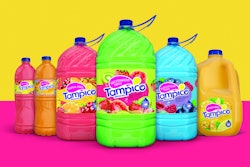Chr. Hansen, a Denmark-based global bioscience company, develops and produces cultures, enzymes, probiotics, and natural colors for a variety of dietary supplements, foods, and more.
Serving the nutritional, pharmaceutical, food, and agricultural industries, it has one of the world’s largest commercial collections of bacteria strains, numbering more than 30,000. Founded in 1874, the company has over 3,000 employees in more than 30 countries.
Labeling: a critical function
Labeling is a fully-integrated part of Chr. Hansen’s production and delivery process and plays a central role in its distribution process. “It is really key that the labeling process works,” says Jens Berth, Senior Project Manager at Chr. Hansen. Some of the company’s labeling needs include the following:
• Approximately 3,000 label print requests per day
• Pouch, box, packaging, and shipping labels
• Labels printed from 30 different locations
A dedicated team of label designers, business support (who interface with IT), compliance, legal, and production functions create and maintain their label templates.
Existing system makes validation challenging
The company’s previous labeling system had its limitations. “The cost of running the system was very high,” says Johnny Krough Sørensen, Global Coordinator, Business Support for Chr. Hansen. “It was based on 15-year-old technology and was built on a fire-and-forget philosophy.”
Operating in the life science industry, any software that touches a regulated process must be validated according to FDA criteria. Because the system was custom-built, it was costly to validate. Adding to the challenge, only internal users could access the system, and the label creation process was tedious and cumbersome.
Lack of IT support causes downtime
While validation and costs posed problems, the most critical shortcoming was that Chr. Hansen could not get the 24/7 IT support for the system that their production demands. It is critical that the production line doesn’t stop. As Berth explains, “Each production line has someone responsible for identifying why the line stops, hunting down the issue, and fixing it. If a line is down for 20 minutes, you get a call from upper management.”
To address these issues, Chr. Hansen sought new labeling solution. “We wanted true web-based access, a smooth and effective template design process, and a standard system ready for validation,” says Sørensen. The system also needed to offer global support and service, a seamless failover system and a reliable, consistent data flow.
Tight SAP integration using NiceLabel’s ABAP package
Chr. Hansen selected a label management system from NiceLabel. The system is integrated with Chr. Hansen’s enterprise resource planning (ERP) system, SAP, using NiceLabel’s SAP ABAP package. The package ensured a quick, simple implementation. “It works really well thanks to the SAP plug-in,” Berth notes.
Chr. Hansen uses NiceLabel’s built-in label template approval process with delayed publishing workflow. Label templates are built in the system and approved in the NiceLabel document management system (DMS).
The system sends label information to SAP so that personnel know the label templates, variants, version, and variables used in each print batch. There is a predefined list of allowed variables stored in SAP, and if an unapproved variable is used, a warning is issued. This workflow also allows the company to send print requests for a specific (previous) version of a label template or variant, which is useful if it needs to do a rerun of a production order.
Meeting delayed label printing needs
The NiceLabel team also configured a web print application for Chr. Hansen, as labels are never printed at the same time as a work order/print request is created in SAP. “We have hundreds of workers creating process orders in SAP all the time,” says Berth. “Typically we create orders one week in advance of the actual printing, so the web printing application lets us print the label job that was previously created by SAP, this is key for the way we work.”
To meet the requirement for 24/7 system availability, the company placed local NiceLabel servers at its plants in Avedøre, Denmark; Polheim, Germany; and Milwaukee, WI. These servers are synchronized with the main server (in Hørsholm, Denmark) so that they can continue to produce and print labels, even when the main server is unavailable.
Variant technology for life sciences
Chr. Hansen also uses NiceLabel’s variant technology—built specifically for life science companies—for the pharma section of its production (Health & Nutrition). A label variant is the exact finished label for a specific SKU. This functionality enables Chr. Hansen’s QA staff to approve the label variants before they are printed. Label variants also prevent any unauthorized changes to the label content after the variant is created. The print operator can only change or enter a very limited set of variable fields, such as the batch number and production date.
Implementing NiceLabel’s label management system, with its universal label templates and label variant technology, gave Chr. Hansen the opportunity to consolidate its templates. “We’ve done a huge clean-up with NiceLabel, as opposed to the old system. We’ve really been able to reduce the number of templates we use,” Berth says.
Improved user experience benefits business users
The new system also offers benefits for those working with label design. According to Berth, “The users are very pleased with the Label Designer. They like the features it has. It is a much better user experience than the previous solution.”
Sørensen agrees, “The overview from the Business Support side is better. It’s a more effective process and I can discover if there’s an error earlier than I could before.”
Successful validation an important milestone
Chr. Hansen also achieved a significant milestone at the start of 2019, when it successfully completed the validation of the NiceLabel label management system. It is still in the process of rolling out the system to the entire organization, but the hope is that all locations will be running on NiceLabel by the end of 2019. As Berth explains, “This is a huge success in Chr. Hansen and we will retire our former label management system.”
Healthcare Packaging Serialization Playbook
This free e-book provides the latest DSCSA-compliant serialization success strategies, realworld implementation tips, and pitfalls to avoid. Easy-to-comprehend segments cover everything from assembling your serialization team, to pilot testing and more. Plus, learn how OPEN SCS will affect you. Download the Serialization Playbook at pwgo.to/3823.



























